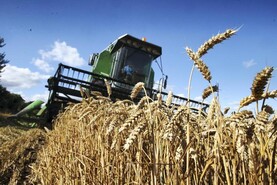We have in the Teagasc National Farm Survey figures excellent measurements of farm incomes per acre and of incomes in the different enterprises.
However, looking at Irish farming as a whole, it is clear that productivity growth and efficiency in the broadest sense has differed widely between the sectors over the last 20 years.
Last week, a Teagasc study looked at the profitability of Irish dairying compared with other EU countries.
As people look at the figures, recent developments in Irish dairying stand out: the developments of grazing systems at Moorepark; the development and implementation of the economic breeding index by ICBF and as was highlighted last week, the decision by the Irish co-op-based dairy industry to facilitate expansion and farm profitability by investing in processing capacity to cope with a grass-induced peak.
The other standout sector, where productivity gains and efficiencies have demonstrably increased, is the pig sector
In the UK, grass-produced milk has been positively discouraged and bona fide farmers have paid the price.
The other standout sector, where productivity gains and efficiencies have demonstrably increased, is the pig sector. It is not that long ago since 20 pigs sold per sow per year was an excellent performance.
Now, there are many of our best farms doing more than 30 pigs sold per year with improved feed conversion efficiency and improved growth rate per day. Teagasc research and advice has been to the fore in these developments.
I have seen no signs of similar efficiency gains in the beef sector though it is clear from comparing individual farm performance that productivity in factors such as stocking rate and average daily gain vary hugely. But, in aggregate, national beef output has been static for many years and unlike in dairying, we seem to have no national measurement of how the efficiency of the sector and its component parts have developed over the years.
On the other hand, there seems to be a resurgence in sheep where similar drawbacks, as in beef, do not apply
The abandonment of modern technology and the increased number of dairy beef steers has added, I suspect, to the comparative decline in efficiency. On the other hand, there seems to be a resurgence in sheep where similar drawbacks, as in beef, do not apply.
Similarly, in tillage, there are good figures on the incomes but little detail on the investments and numbers of man days devoted to crop production. Similarly, there are technological withdrawals and in areas, a degeneration in soil quality. Again, we lack the numbers.
We may not like the answers that come from a detailed analyses of the various sectors but if we do not have the essential information, it is difficult to devise and implement policies that deliver an efficient and competitive industry across the board.
Read more
Dempsey at Large: contradictions in competitiveness and the new sustainability
Just 18% of cattle farms viable – Teagasc
We have in the Teagasc National Farm Survey figures excellent measurements of farm incomes per acre and of incomes in the different enterprises.
However, looking at Irish farming as a whole, it is clear that productivity growth and efficiency in the broadest sense has differed widely between the sectors over the last 20 years.
Last week, a Teagasc study looked at the profitability of Irish dairying compared with other EU countries.
As people look at the figures, recent developments in Irish dairying stand out: the developments of grazing systems at Moorepark; the development and implementation of the economic breeding index by ICBF and as was highlighted last week, the decision by the Irish co-op-based dairy industry to facilitate expansion and farm profitability by investing in processing capacity to cope with a grass-induced peak.
The other standout sector, where productivity gains and efficiencies have demonstrably increased, is the pig sector
In the UK, grass-produced milk has been positively discouraged and bona fide farmers have paid the price.
The other standout sector, where productivity gains and efficiencies have demonstrably increased, is the pig sector. It is not that long ago since 20 pigs sold per sow per year was an excellent performance.
Now, there are many of our best farms doing more than 30 pigs sold per year with improved feed conversion efficiency and improved growth rate per day. Teagasc research and advice has been to the fore in these developments.
I have seen no signs of similar efficiency gains in the beef sector though it is clear from comparing individual farm performance that productivity in factors such as stocking rate and average daily gain vary hugely. But, in aggregate, national beef output has been static for many years and unlike in dairying, we seem to have no national measurement of how the efficiency of the sector and its component parts have developed over the years.
On the other hand, there seems to be a resurgence in sheep where similar drawbacks, as in beef, do not apply
The abandonment of modern technology and the increased number of dairy beef steers has added, I suspect, to the comparative decline in efficiency. On the other hand, there seems to be a resurgence in sheep where similar drawbacks, as in beef, do not apply.
Similarly, in tillage, there are good figures on the incomes but little detail on the investments and numbers of man days devoted to crop production. Similarly, there are technological withdrawals and in areas, a degeneration in soil quality. Again, we lack the numbers.
We may not like the answers that come from a detailed analyses of the various sectors but if we do not have the essential information, it is difficult to devise and implement policies that deliver an efficient and competitive industry across the board.
Read more
Dempsey at Large: contradictions in competitiveness and the new sustainability
Just 18% of cattle farms viable – Teagasc






 This is a subscriber-only article
This is a subscriber-only article










SHARING OPTIONS: